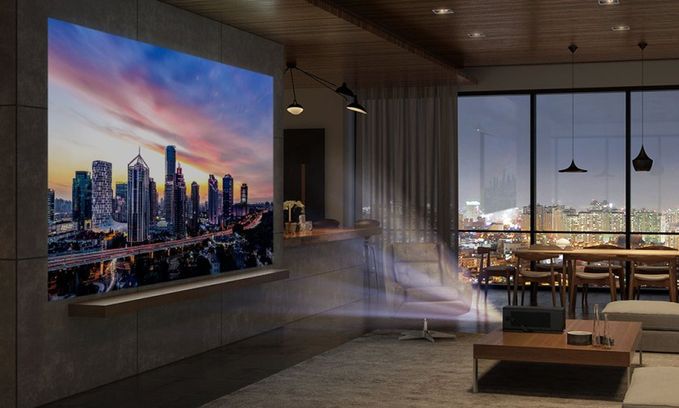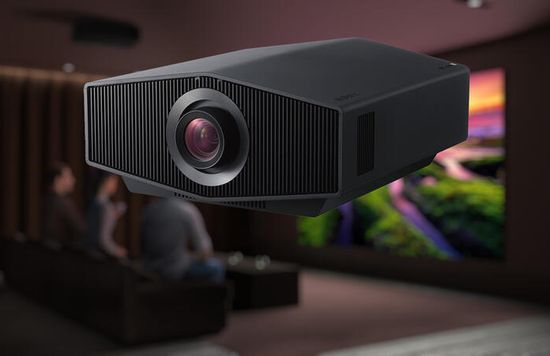The consistently high popularity of Home Theater projectors is a great incentive for their manufacturers. In recent years, this segment has been actively expanding with mid-throw and ultra-short-throw (UST) projectors.
As known, their optics provide projection size of 100 inches or more from a distance of only 20-30 inches.

But a few years ago, UST projectors were significantly more expensive due to the high cost of complex aspherical optics. For example, the price of the LG PF 1000 UST with very modest specs reached $ 1,000. But today this factor has practically disappeared. Of course, placing the projector close to the screen eliminates the hassle of running wires in the living room or a complicated ceiling mount. This factor has greatly increased their appeal as an alternative to the traditional TVs. As a result, the market has practically formed a new segment UST ‘living room projectors’, which very successfully compete with traditional mid-focus models.
Introduction
This year, the companies have introduced a wide range of new mid-budget Home Theater 4K laser projectors ranging in price from $ 2,500 to $ 6,000, including:
–LG CineBeam HU715Q – $ 2,500;
–JMGO U2 – $ 3,000;
-Hisense PX1-Pro and L5G – $ 3,500 and $ 4,500 with 100-inch screen;
-Epson LS11000 and LS12000 – $ 4,000 and $ 5,000;
-Sony VPL-XW5000ES – $ 6,000.
The LG CineBeam HU715Q, JMGO U2, Hisense PX1-Pro and L5G are UST models and ideal as an alternative to a TV in a medium-sized living room. Mid-focus Epson LS11000 / LS12000 and Sony VPL-XW5000ES are more expensive and usually placed on the ceiling, but provide better image quality and larger projection size.
Models under the same brand basically use identical light engines, projection technologies, and image processing. More expensive models are usually brighter and more contrast.
Prior to the Hisense PX1-Pro price cut, the JMGO U2 with more modest specs seemed competitive enough. But at a price of $ 3,500, the Hisense PX1-Pro with TriChroma technology and Digital Lens Focus (DLF) looks more attractive. The LG CineBeam HU715Q is a great inexpensive projector, but its picture quality is lower than the competition. In addition, a slight rainbow effect in some scenes are more in line with the mid-budget level. Considering these factors, the list of competitors in the Home Theater segment can be reduced to three models with roughly the same picture quality and price. This list includes:
– Hisense PX1-Pro Laser TV 4K UST – $ 3,500;
– Epson LS11000 4K Home Theater – $ 4,000;
– Sony VPL-XW5000ES 4K – $ 6,000.
Key Features and Specs
Hisense PX1-Pro
Features
-TriChroma laser engine (red + green + blue lasers);
-Color gamut 107% BT.2020;
-Ultra Short Throw;
-Built-in 30W Dolby Atmos sound;
-Digital Lens Focus (DLF) – ultra-precise focusing for screen sizes from 90 to 130-inches via remote;
-Auto Low Latency Mode (ALLM) in Game Mode.
Specs
-Brightness 2,200 ANSI Lumens;
-1,000,000:1 dynamic contrast ratio;
-Throw Distance 0.5 – 0.7 m;
-Image Size 90″ – 130″ (228 – 330 cm);
-Throw Ratio 0.25:1;
-Display Type – 1 cm DLP x 1;
-Internal Speakers – 15.0W × 2;
-Included Lens – Fixed focal length, manual focus;
-Lens Shift – No.
Epson Home Cinema LS11000
Features
-4K PRO-UHD Advanced Pixel-Shifting technology;
-Precision Shift Glass Plate technology;
-32-bit Epson ZX picture processor;
-2,500 lumens of Color and White brightness.
Specs
-White and Color Brightness 2,500 ANSI Lumens;
-1,200,000:1 dynamic contrast ratio;
-Throw Distance 3 – 9 m;
-Image Size 50″ – 300″ (127 – 763 cm);
-Throw Ratio 1.35:1 – 2.84:1;
-Display Type 2 cm 3LCD Chips;
-Internal Speakers – No;
-Included Lens – 2.1x Powered zoom / focus;
-Dynamic Iris;
-Lens Shift – Horizontal ± 96.30% & Vertical ± 47.10%.
Sony VPL-XW5000ES
Features
-‘Infinite’ black contrast with LCoS (Liquid Crystal on Silicon) technology;
-Native 4K SXRD panel;
-Wide Dynamic Range Optics supports a 95% DCI-P3 wide color gamut.
Specs
-Brightness 2,000 ANSI Lumens;
-Throw Distance 2 – 6 m;
-Image Size 40″ – 200″ (102 – 509 cm);
-Throw Ratio 1.38:1 – 2.21:1;
-Display Type 2 cm SXRD x 3;
-Internal Speakers – No;
-Included Lens – 1.6x manual zoom / focus;
-Lens Shift – Horizontal 71% & Vertical ± 25%.
Hisense PX1-PRO
As known, a laser projector ‘mixes’ the wavelengths of red, green, and blue to generate the desired sub-pixel colors. Single-laser model with color wheel uses a blue laser to generate blue, and phosphors to generate green and red. These projectors are cheaper, but some of the light output is lost on the color wheel, reducing the saturation of the image. In addition, the accuracy of the “phosphor” color is significantly lower than coherent laser radiation. Therefore, expensive professional models use three lasers without phosphors.
In 2019, LG introduced first ‘non-professional’ HU85L 4K UST projector with blue and red lasers. Last year, Hisense and JMGO presented L9G TriChroma and JMGO U2 using three lasers, which provide an unparalleled color gamut, covering more than 107% of the BT.2020 color space.
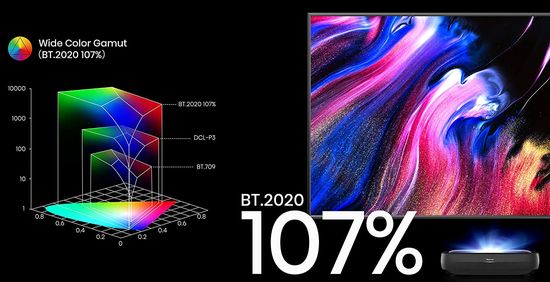
It provides sharper, brighter and more vibrant images.

In fact, Hisense PX1-PRO is new version of L9G. It comes without a screen and is less bright (2,200 Lm vs 3,000 Lm), but much cheaper ($ 3,500 vs $ 5,500) and has a handy built-in digital zoom function (Digital Lens Focus).

Projector uses 0.47-inch XPR (Xpanded Pixel Resolution) DLP chipset with native (1,920 x 1,080) resolution and four-phase pixel shifting.
The four-phase pixel shifting allows the projector to display 4K content with a chipset whose native resolution is only (1,920 x 1,080). In fact, the projector takes 4K content, splits it into four parts of 2 million pixels each, and plays back 4 separate frames with vertical and horizontal offset, broadcasting the entire 4K volume with only 2 million pixels.
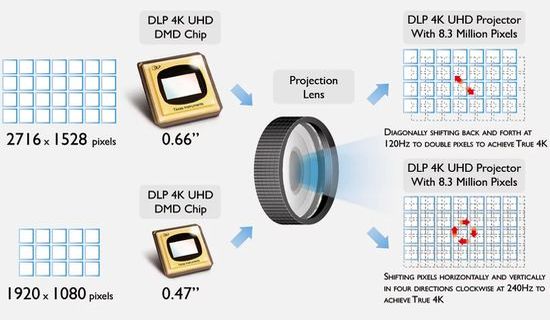
Pixel shifting on the screen is carried out using the XPR module, which changes the angle of the lens 4 times per second using 4 electromagnets.
Epson LS11000
Model uses new light source based on two arrays of laser diodes.

The company has also eliminated the flickering. In past models, this problem was caused by fluctuations in the intensity of yellow light. It arose when a laser beam hit a rotating disk with a phosphor due to the uneven thickness of the deposited layer, microdefects on the disk surface, etc. The developers established the dependence of flicker on the difference between the speed of disk rotation and the laser pulse frequency. This effect occurs when 20 Hz is exceeded. Its reduction with disc speed adjustment and laser PWM adjustment drastically reduce flicker.
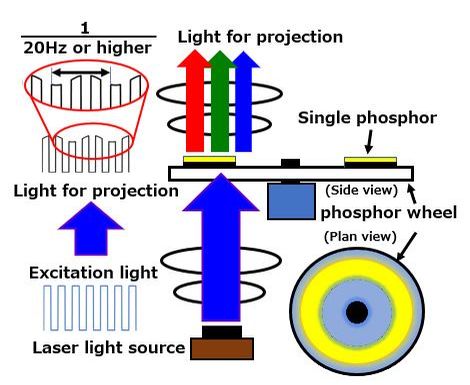
Moreover, increasing the thermal conductivity and thermal stability of the yellow phosphor material on the rotating disk allowed the developers to reduce its size and noise level.

As known, the company uses a blue laser diode array and a disk with yellow phosphor to generate white, which is then converted using optics to red, blue and green and sends to three .74-inch LCD chips.
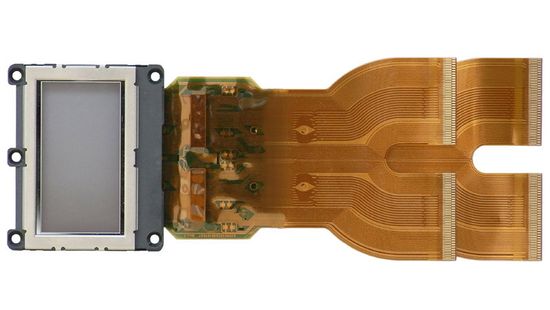
In this year’s models, Epson uses two-axis pixel shift (or four-phase pixel shifting), calling it Precision Shift Glass Plate technology. In fact, it quadruples the number of pixels, displaying a 4K (3,840 x 2,160) image using 1080p chipsets.
As known, the three-chip architecture in 3LCD projectors does not use a color wheel, without losing the brightness of colors during filtering. Therefore, it provides the same brightness of white and colors, which is one of the main pros of this technology.

Of course, the company focuses the attention of consumers on this aspect, indicating in the specs white and CLO (Color Light Output) brightness, which are always identical.
Sony VPL-XW5000ES
Model uses Sony’s Z-Phosphor laser light engine which launched in 2017 in VPL-PWZ10 / PHZ10 and today is positioned as one of the best in the industry.
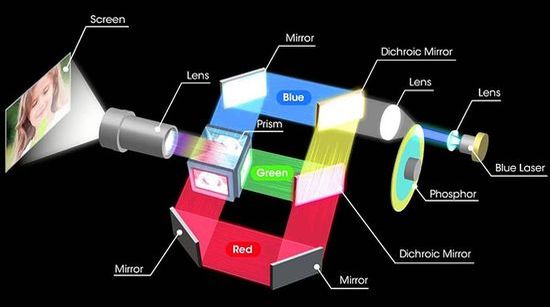
As known, LCoS (liquid crystal on silicon) technology was developed by JVC in 2013 as a hybrid of DLP and 3LCD technologies. Today it’s used in three versions:
– Sony – SXRD (Silicon X-tal Reflective Display);
– JVC – D-ILA (Digital Direct Drive Image Light Amplifier);
– Canon – AISYS (Aspectual Illumination System).
This technology provides almost perfect blacks due to the tiny width of the gaps between the liquid crystals, through which very little light passes. But it’s difficult to manufacture, and LCoS projectors are significantly more expensive vs DLP / 3LCD models. Of course, the high price limits their popularity. Basically, this technology is used only in premium Home Theater projectors from $ 10,000 and more. In fact, the Sony VPL-XW5000ES is the first relatively affordable LCoS projector.
Unlike the previous series with .74″ DCI (4,096 x 2,160) chipsets, the new models use .61″ native 4K (3,840 x 2,160) SXRD panels.
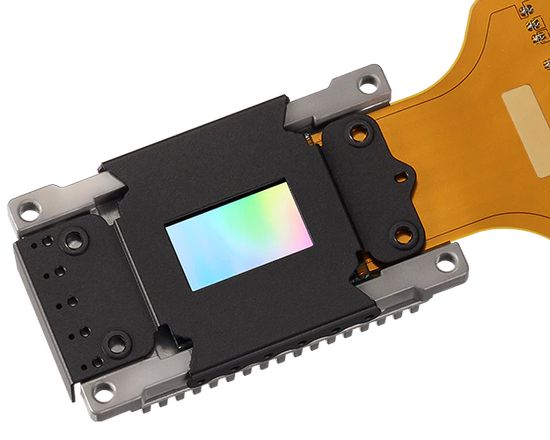
This decision allowed the company to significantly reduce the price and size. But reducing its resolution will not affect the image quality due to the limited DCI (Digital Cinema Initiatives) content.
The Japanese giant is one of the innovation leaders in video processing. Some users may have heard of Dual-Database Processing, Object-based Super Resolution, Dynamic HDR Enhancer and others very effective technologies in Sony BRAVIA TVs. The New Sony X1 Ultimate processor for projector made them available in the XW5000ES.
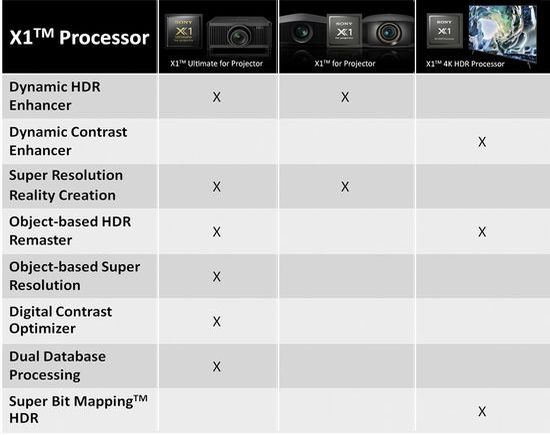
As a result, Wide Dynamic Range Optics, great LCoS contrast and image smart-optimization deliver flawless 4K premium quality at an affordable price.
Conclusion
Pros
-great price;
-color gamut of 107% BT.2020 with TriChroma technology based on triple laser (red + green + blue) light engine;
-Ultra Short Throw optics is ideal for living room;
-built-in 30W Dolby Atmos sound;
-ultra-precise focusing with Digital Lens Focus (DLF) for screen sizes from 90 to 130-inches via remote.
Cons
-no Lens Shift;
-image size only 130″.
Pros
-Precision Shift Glass Plate technology;
-32-bit Epson ZX picture processor;
-2,500 lumens of Color and White brightness;
-Image Size 50″ – 300″ (127 – 763 cm);
-2.1x powered zoom / focus lens;
-Lens Shift (Horizontal / Vertical) ± 96% / ± 47%.
Cons
-no internal speakers.
Pros
-dramatically improving the image quality with Sony’s video processing algorithms due to the premium X1 Ultimate processor for projector;
-great black contrast with LCoS (Liquid Crystal on Silicon) technology;
-native 4K SXRD panel;
-Wide Dynamic Range Optics;
-1.6x manual zoom / focus lens;
-Lens Shift (Horizontal / Vertical) ± 25%71% / ± 25%.
Cons
-high price;
-only 2000 ANSI Lm brightness ;
-no internal speakers.
Without the hassle of ceiling mounts or wiring, the Hisense PX1-Pro is perfect for the living room as an alternative to a TV.
The Sony VPL-XW5000ES delivers great picture quality but costs $ 2,500 more. Probably, it will be an ideal choice for moviegoers in the home cinema.
With an excellent CLO brightness, and a screen size up to 300″, the universal Epson LS11000 is perfect for a cinema room, or viewing in the yard in a big company with beer and barbecue.
This video explains the reason for the different brightness of DLP and 3LCD projectors.
